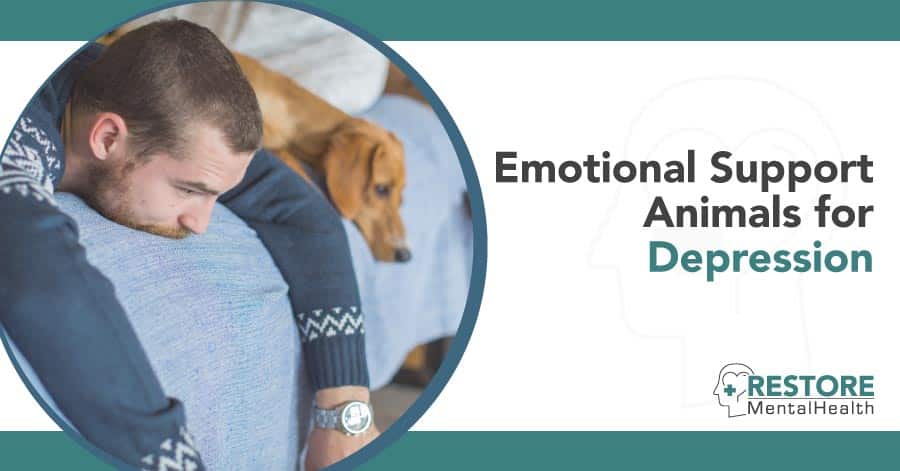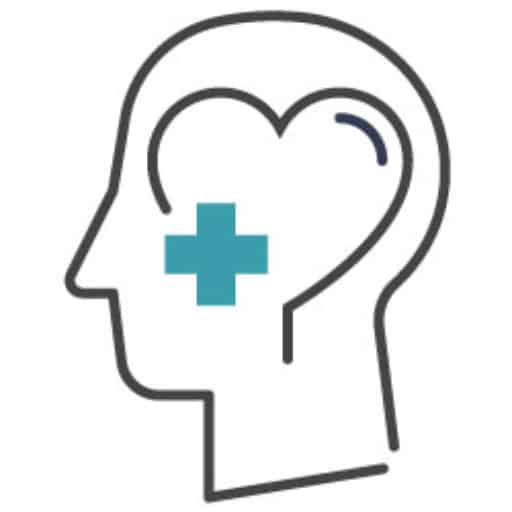What’s the best emotional support animal for depression, and how can they help? Learn about different ESAs, their benefits and how to get one.
When depression strikes, we can find comfort in the people around us — from licensed therapists to friends and family members. But what if you’ve exhausted all those support systems and you’re still struggling? Emotional support animals might just provide the therapeutic company you need.
Pets are therapeutic in their own right, and emotional support animals (ESAs) can provide companionship and love unconditionally. But what’s the best emotional support animal for depression? Let’s explore some of the most popular ESA options to see which one might be right for you.
What’s an Emotional Support Animal (ESA)?
You’ve probably heard of service animals — for instance, seeing-eye dogs that help those with vision impairments. Emotional support animals are different in that they don’t have to perform any specific tasks for their owners — they’re simply there to provide companionship and emotional support. Service animals, on the other hand, are trained to do things like open doors and guide owners around obstacles.
That said, ESA companionship can be invaluable for those struggling with depression, anxiety or other mental health conditions. Your therapist can legally prescribe an ESA, and there are many online resources that can help you find a registered emotional support animal.
Can Any Animal Be an ESA?
Some of the more obvious choices for an emotional support animal include dogs, cats and rabbits. But did you know that even animals like snakes, pigs and miniature horses can be registered as ESAs?
Believe it or not, the only requirement for an ESA is that it can be domesticated, so peacocks, turkeys, goldfish and even spiders have been registered as emotional support animals.
What’s the Best Emotional Support Animal for Depression?
While any domesticated animal can technically be an ESA, some are better suited to the task than others. If you’re struggling with depression, here are a few of the best emotional support animals to provide companionship and love:
Dogs
Dogs are one of the most popular ESAs for a reason: They make great companions and can be trained to do all sorts of things. But did you know that they can also help relieve depression symptoms?
Research shows that dog ownership is linked with lower levels of depression, anxiety and loneliness. Dogs also provide much-needed structure and routine for those struggling with mental health conditions. If you’re considering a dog as your emotional support animal, be sure to do your research to find the right breed for you.
Cats
Cats might not be as popular as dogs when it comes to emotional support animals, but they can still make great companions. They’re low-maintenance (compared to dogs, at least), and their independent nature can be a soothing presence for those struggling with depression.
But while cats might not need as much attention as dogs, they still need plenty of love and care. Be sure you’re prepared to provide a good home for a cat before bringing one into your life.
Rabbits
Rabbits are another low-maintenance emotional support animal, and their gentle nature can be calming for those dealing with depression. They’re also relatively silent, so they won’t disrupt your home life if you need peace and quiet.
Like cats, rabbits require a good amount of care. They need plenty of exercise, a healthy diet and a clean environment.
Keep in mind that the most important criteria for choosing an emotional support animal is that it brings you joy. If you have your heart set on a specific animal but are unsure if it’s the best fit for your needs, be sure to consult with your therapist or doctor.
How to Register Your Animal as an ESA
You might be surprised to learn that emotional support animals require hardly any paperwork. There’s no official ESA database; you simply need a certified letter from your mental health professional stating that your animal is part of your treatment plan.
If you have this, you can live with your emotional support animal in any “no pet” housing, and you’re even allowed to fly with them in the cabin of some airplanes (although airlines are no longer required to allow this).
It’s best to keep the certificate on you whenever you’re getting approval to have your animal in a new place, as some landlords or businesses will request to see it.
How Can an ESA Help You?
All pet owners have felt the naturally therapeutic effects of spending time with their animals. In terms of serious mental health conditions, though — like depression — what can an emotional support animal really do?
In 2021, the first peer-reviewed study into ESAs was published, with incredible results. Participants had significantly decreased signs of anxiety, depression and loneliness after just one year of adopting their ESA.
Even the very first studies into human-pet interaction hinted at an outcome like this. In 1983, one study found that adults petting dogs experienced decreased blood pressure — aka, improved relaxation.
Are ESAs a Good Fit for You?
As with any prescribed mental health treatment, you should always consider the option from all angles before making a decision. You might think, “What could be difficult about an emotional support animal?”
But like anything else in life, there are some potential downsides. Pets require time and effort to care for — and this can be difficult when you’re struggling with depression. The last thing you want is to neglect both your own needs and your animal’s.
It’s also worth noting that not everyone will respond positively to an emotional support animal. In fact, some people might feel uncomfortable or even threatened by them, depending on their own personal experiences.
If you’re considering getting an ESA, make sure to speak with your doctor or mental health professional first. They’ll be able to help you weigh the pros and cons and decide whether it’s the right decision for you. If you’re an animal person at heart, though, it’s definitely worth considering!
Taking Your First Steps
The best way to get started is to do some research and figure out what kind of animal would be the best fit for you. Don’t forget to secure the certification from your mental health professional — this is the most important part of the process. Once you have that, you’re well on your way to enjoying all the benefits an emotional support animal can bring.
If You Need More Help
Remember that an emotional support animal isn’t a cure-all. Like medication, it’s a source of support to make things a little easier while you work on your mental health journey. With time and effort, you’ll get there — and your ESA will be by your side every step of the way.
If you require more support alongside your emotional support animal (ESA), you’re not alone. There are plenty of resources to use and people to talk to. Here at Restore, we specialize in a range of accredited treatments from depression to ADHD. Don’t hesitate to give us a call or visit our website to learn more about how we can help you.



